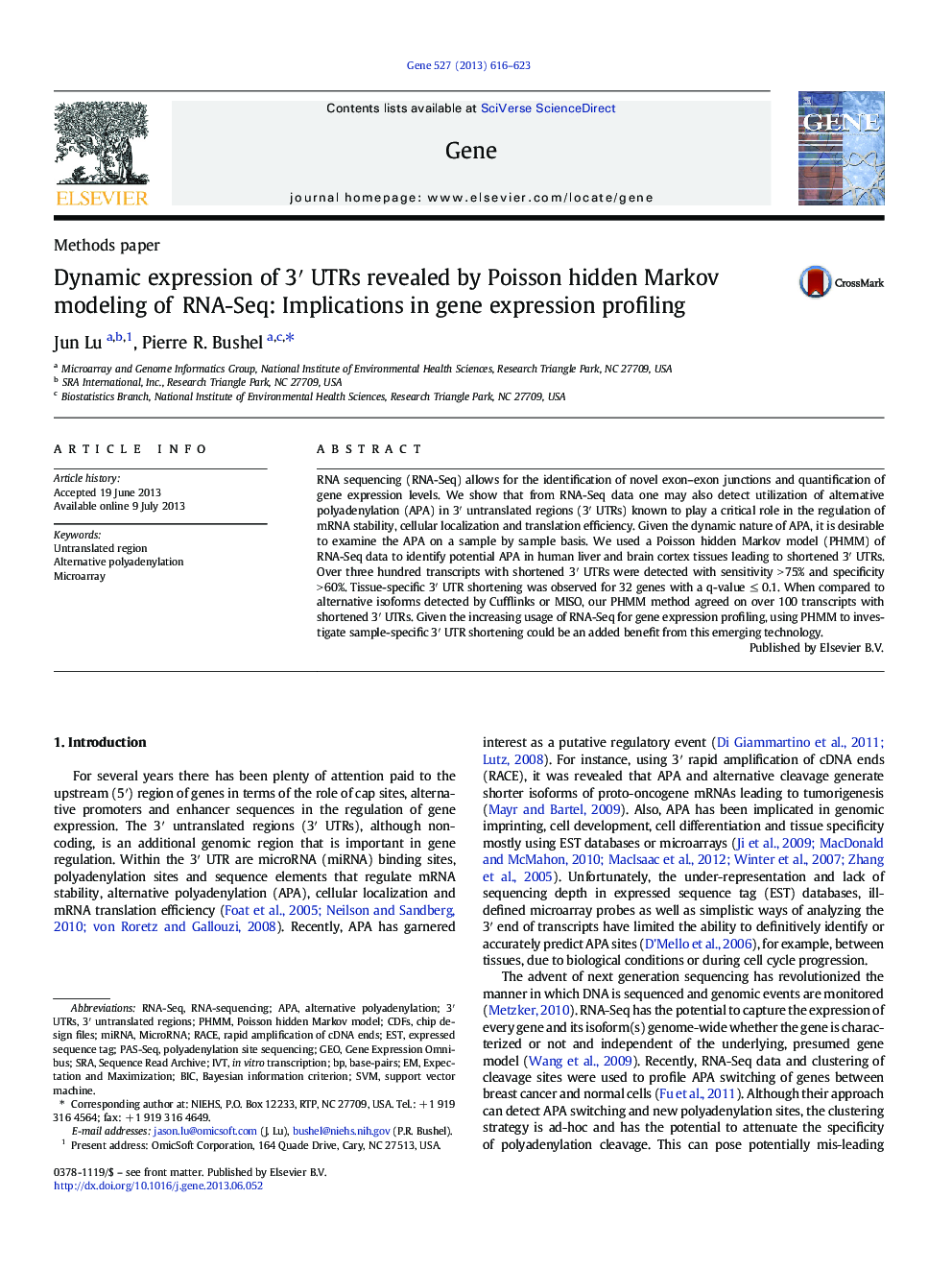| Article ID | Journal | Published Year | Pages | File Type |
|---|---|---|---|---|
| 2817025 | Gene | 2013 | 8 Pages |
•RNA-Seq PHMM reveals hidden states representative of 3′ UTR shortening.•RNA-Seq PHMM has an advantage over chip designs for microarray analysis.•RNA-Seq PHMM allows detection of tissue-specific expression at the 3′ UTR.
RNA sequencing (RNA-Seq) allows for the identification of novel exon–exon junctions and quantification of gene expression levels. We show that from RNA-Seq data one may also detect utilization of alternative polyadenylation (APA) in 3′ untranslated regions (3′ UTRs) known to play a critical role in the regulation of mRNA stability, cellular localization and translation efficiency. Given the dynamic nature of APA, it is desirable to examine the APA on a sample by sample basis. We used a Poisson hidden Markov model (PHMM) of RNA-Seq data to identify potential APA in human liver and brain cortex tissues leading to shortened 3′ UTRs. Over three hundred transcripts with shortened 3′ UTRs were detected with sensitivity > 75% and specificity > 60%. Tissue-specific 3′ UTR shortening was observed for 32 genes with a q-value ≤ 0.1. When compared to alternative isoforms detected by Cufflinks or MISO, our PHMM method agreed on over 100 transcripts with shortened 3′ UTRs. Given the increasing usage of RNA-Seq for gene expression profiling, using PHMM to investigate sample-specific 3′ UTR shortening could be an added benefit from this emerging technology.
Graphical abstractFigure optionsDownload full-size imageDownload high-quality image (152 K)Download as PowerPoint slide
